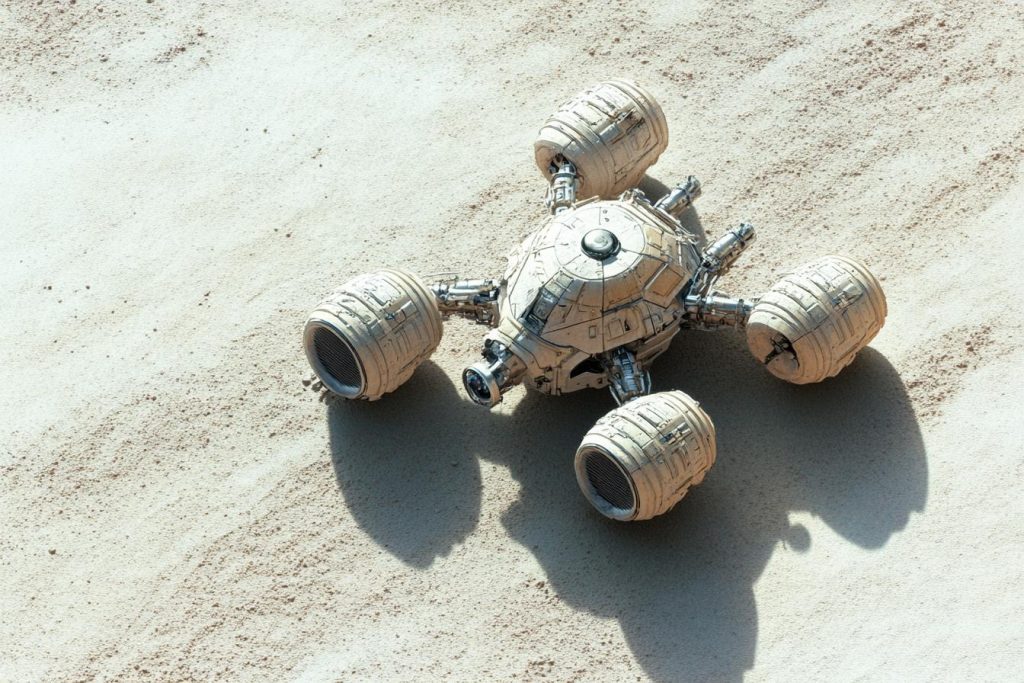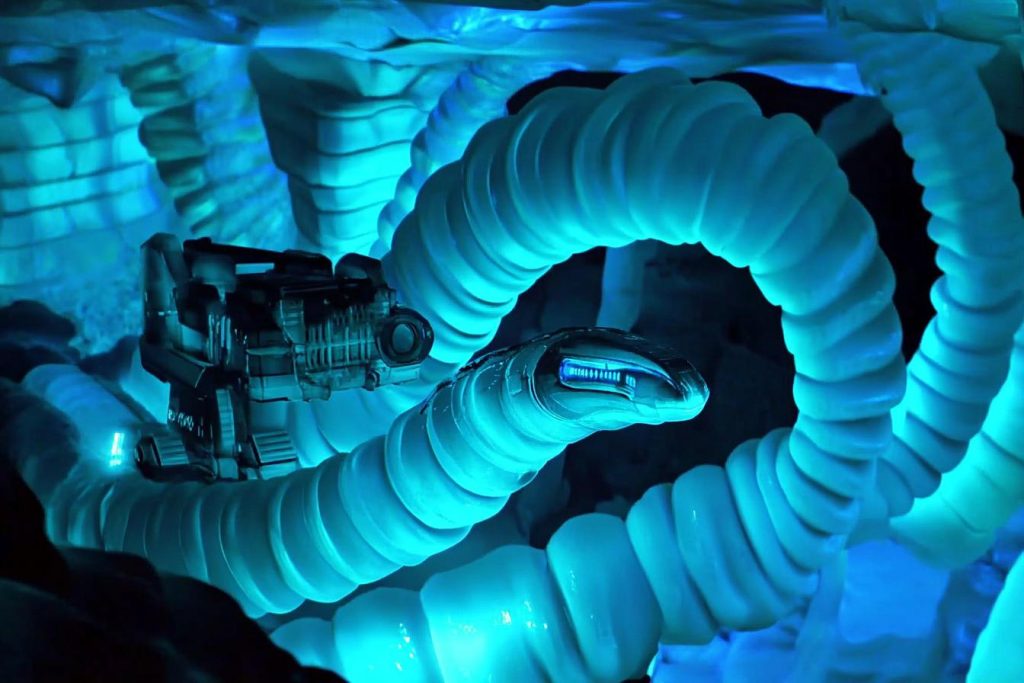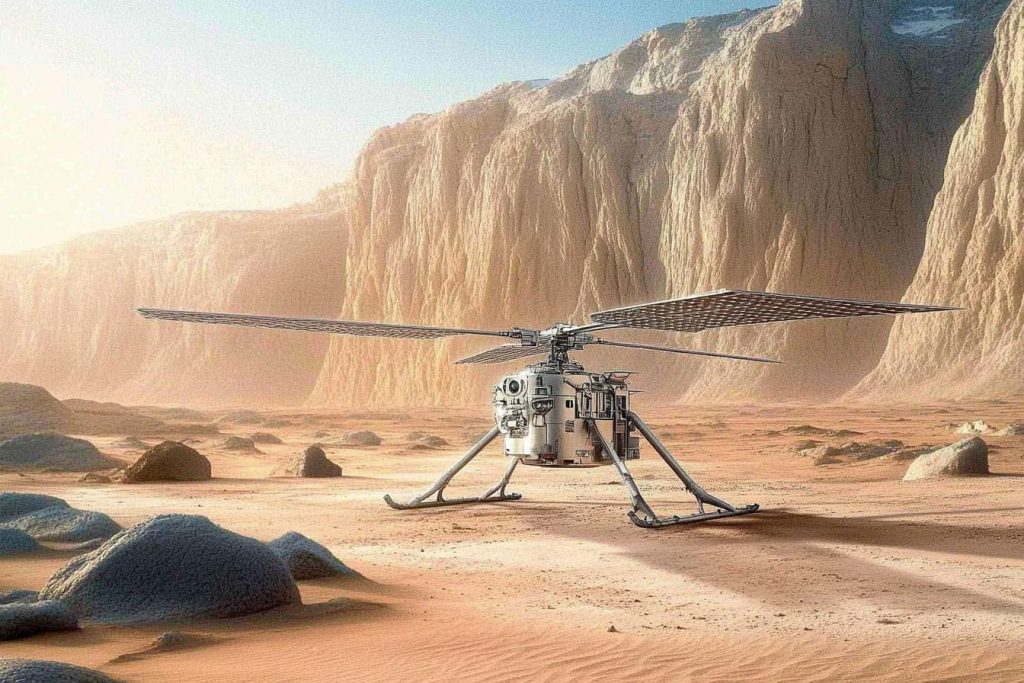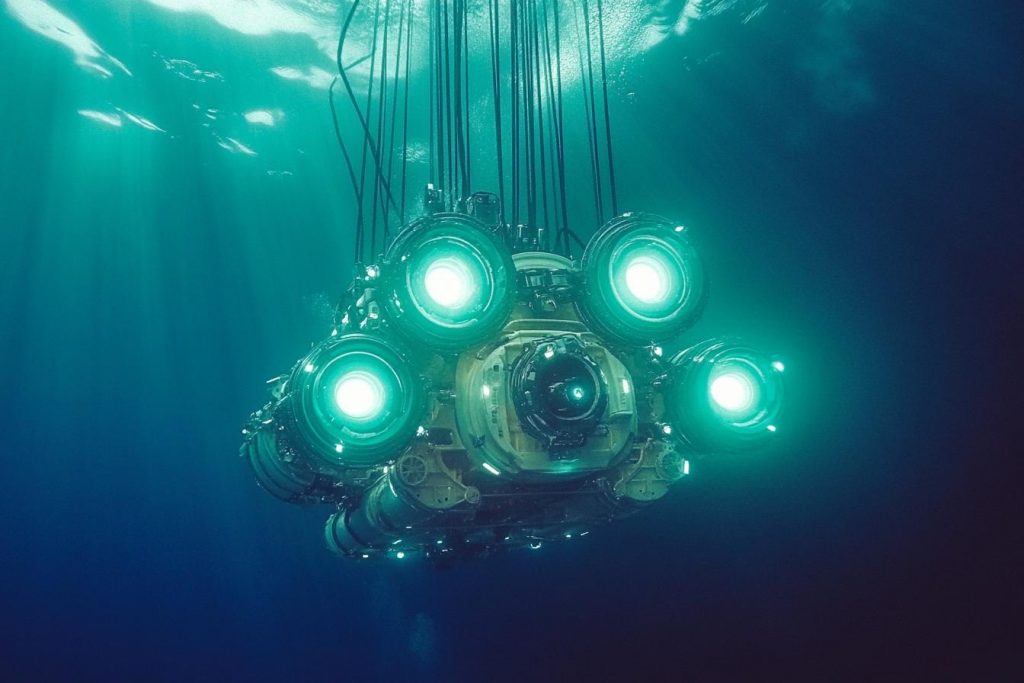
The future of space travel and extraterrestrial exploration demands machines that look more at home on the surface of a distant moon than on Earth’s highways. These bizarre and cutting-edge vehicles seem ripped from the pages of science fiction, blending alien aesthetics with groundbreaking engineering. Designed to survive extreme conditions and navigate unknown terrain, they challenge our concept of what a vehicle should even be. From Mars rovers to deep-sea crawlers, these designs might just be a preview of the transportation of tomorrow.
NASA’s Starship Rover Prototype

With its spider-like legs and glowing sensors, NASA’s latest rover prototype looks like it belongs on a sci-fi movie set. Designed for lunar and Martian terrain, it features modular limbs that adapt to uneven surfaces and extreme temperatures. The vehicle’s body shimmers with solar-absorbing material, giving it an iridescent, alien sheen. It’s not just futuristic—it’s functional, made to go where wheels simply can’t.
The DARPA Spider Tank

Built with a hexapod design, this experimental DARPA vehicle moves like a massive mechanical insect. It walks instead of rolls, allowing it to traverse rugged and unstable landscapes without getting stuck. Covered in armor plating and equipped with sensory antennas, it seems better suited for alien worlds than earthly battlefields. Its presence alone feels otherworldly, like a sentinel from a distant galaxy.
Japan’s Moon Motorcycle Concept

Sleek and strangely beautiful, this single-rider concept was designed to let astronauts zip across the lunar surface. It’s gyroscopically balanced, lightweight, and powered by silent electric motors to minimize dust disruption. Its wheels are wrapped in a mesh-like exoskeleton that can grip loose terrain. With its curved body and glowing underlights, it looks more like a creature than a machine.
ESA’s Deep-Ice Explorer

Crafted for missions beneath Europa’s icy crust, this European Space Agency vehicle resembles a glowing, coiled serpent. It’s designed to melt its way down through thick ice layers, using onboard nuclear heat to create tunnels as it descends. Once beneath the surface, its segmented body can slither through subglacial oceans. Its alien-like form isn’t just eye-catching—it’s made to adapt in a world without sunlight.
The Chinese Lunar Hopper

Unlike traditional rovers, this vehicle leaps across the moon’s surface using compressed air and spring-loaded limbs. Its design is insectoid, with lightweight exoskeletal legs and an elongated central body packed with sensors. Hopping from crater to crater, it can avoid obstacles entirely. From a distance, it could easily be mistaken for an alien organism in motion.
NASA’s Axial Mars Helicopter

This next-generation Martian flyer looks like a dragonfly built by machines. With rotating twin blades and a gleaming solar panel back, it hovers above the surface to scout rocky terrain. Its ultralight frame gives it a delicate, alien grace as it silently surveys the red planet. This flying machine redefines exploration by air in environments with little atmosphere.
The Aquanaut Submersible Robot

Designed for undersea missions on Earth and beyond, the Aquanaut transforms from a torpedo into a humanoid submersible. Its limbs unfold from its body like something out of a sci-fi horror flick, enabling it to grasp, scan, and navigate autonomously. Its glowing lenses and fluid movement make it look alive. If aliens built submarines, this is probably what they’d look like.
NASA’s Volatiles Rover for the Moon

Built to search for frozen water in the Moon’s shadows, this rover is squat and spindly with wide, mesh-like wheels. Its legs can shift and tilt, adjusting for the slope of lunar craters. The structure looks skeletal and exposed, as if its components are grown rather than assembled. It’s a haunting glimpse into the future of lunar science missions.
The Martian Habitat Transporter

This massive crawler is meant to haul entire base modules across alien terrain. Its tank-like treads and segmented frame can twist and bend as it moves over jagged rocks and soft sands. Covered in reflective insulation, it glints in the sunlight like some oversized extraterrestrial insect. It doesn’t just look alien—it’s built for building alien worlds.
The Venus Atmospheric Glider

This manta ray-shaped drone is designed to ride the dense winds of Venus’s upper atmosphere. It soars rather than flies, using wing-like panels that generate lift even in the planet’s crushing heat and pressure. Its organic, fluid shape is a blend of nature and machine. Floating silently in the clouds of another world, it seems like something from another dimension.
The Titan Submarine Concept

Created for Saturn’s moon Titan, this concept sub looks like a weaponized squid from another planet. With no windows, it uses sonar and external sensors to “see” in pitch black methane seas. Its sleek body and finned propulsion system make it fast, quiet, and hauntingly beautiful. It’s the ultimate alien explorer—for a world that may be hiding life beneath its surface.
The Martian Spiderbot Swarm

Forget one vehicle—this design uses a swarm of palm-sized spider-like bots that explore as a collective. They scuttle across surfaces, mapping terrain and sharing data through a networked hive mind. With spindly legs and reflective eyes, they look more like alien lifeforms than machines. They may be the most efficient explorers yet—and definitely the creepiest.
Venus Crawler: The Acid-Walker Probe

Engineered to survive the crushing pressure and scorching heat of Venus, this experimental walker resembles something out of a biomechanical nightmare. With its six segmented legs and reflective carapace, the Venus Crawler is designed to move across the planet’s toxic landscape, gathering data where wheeled rovers would be instantly destroyed. Its eerie, insectoid appearance makes it look more like a living organism than a machine—blurring the line between alien and artificial. If this probe ever activates, it could become the first machine to truly walk on another hellish world.
When Machines Look Stranger Than Fiction

The line between alien and artificial blurs when humanity starts designing machines for environments we’ve never walked. These vehicles are a testament to our imagination—built not just to survive, but to explore the unimaginable. Whether crawling beneath the ice, leaping across lunar dust, or swimming through alien seas, each one tells a story of our push toward the unknown. And if they look like something out of a sci-fi dream, that might just mean we’re heading in the right direction.





